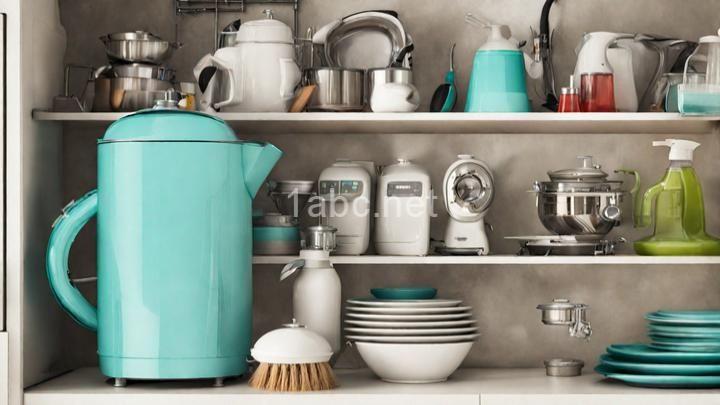Tips for Creating a Sustainable Garden Oasis

Welcome to our blog! In this post, we'll share some valuable tips on how to create a sustainable garden oasis. By incorporating eco-friendly practices into your gardening routine, you can not only enjoy a beautiful outdoor space but also contribute to the well-being of our planet. Let's get started!When it comes to creating a sustainable garden oasis, one of the first things to consider is choosing native plants. These plants are well-adapted to the local climate and require less water, fertilizer, and pesticides compared to exotic species. By selecting native plants, you can create a garden that not only looks stunning but also supports the local ecosystem by providing habitat and food for local wildlife.
Conserving water is crucial for creating a sustainable garden oasis. There are several ways you can practice water conservation in your garden. One option is to install a rainwater harvesting system. This system collects rainwater and stores it for later use, reducing the need for tap water. Another option is to use drip irrigation, which delivers water directly to the roots of the plants, minimizing water waste. Additionally, grouping plants with similar watering needs together and mulching around them can help retain moisture in the soil, reducing the need for frequent watering.
Composting kitchen scraps and yard waste is an excellent way to reduce landfill waste and create nutrient-rich soil for your garden. By composting, you can recycle organic material and turn it into a valuable resource. Use this compost along with organic mulch to enrich the soil, suppress weeds, and conserve moisture. Organic mulch also helps regulate soil temperature, preventing extreme fluctuations that can be detrimental to plant health.
Instead of relying on harmful chemical pesticides, embrace integrated pest management (IPM) techniques. IPM involves using natural predators, companion planting, and physical barriers to control pests while minimizing environmental impact. For example, you can attract beneficial insects such as ladybugs, bees, and butterflies into your garden by planting flowers that attract them. These insects will help pollinate your plants naturally and keep harmful pests in check.
Lawns require excessive amounts of water, energy, and maintenance resources. Consider reducing the size of your lawn or replacing it with low-maintenance alternatives like native groundcovers or vegetable beds. This not only reduces your environmental footprint but also creates a more diverse and interesting garden space.
If you plan on enjoying your garden oasis in the evenings, opt for energy-efficient outdoor lighting options. LED lights are not only eco-friendly but also last longer and consume less electricity. By using efficient lighting, you can minimize energy consumption and reduce your carbon footprint.
When it comes to fertilizers, it's important to avoid synthetic ones that can harm the environment. Instead, opt for organic alternatives such as compost, manure, and seaweed-based fertilizers. These natural fertilizers provide nutrients to your plants without polluting groundwater or harming wildlife.
Transforming your garden into a haven for local wildlife is another way to create a sustainable garden oasis. Incorporate features like bird feeders, bat houses, and butterfly gardens to attract diverse species. These additions not only add beauty and interest to your garden but also help maintain a balanced ecosystem.
In conclusion, by following these tips, you can create a sustainable garden oasis that thrives while minimizing its impact on the environment. Remember, even small changes can make a big difference in preserving our planet's natural resources. Enjoy your green space and be proud of your efforts to contribute to a sustainable future!
FREQUENTLY ASKED QUESTIONS
What is a sustainable garden oasis?
A sustainable garden oasis refers to a garden or outdoor space that is designed and maintained in an environmentally friendly and sustainable manner. It is a space that not only enhances the beauty of the surrounding environment but also supports biodiversity and conserves natural resources.In a sustainable garden oasis, various principles and practices are applied to minimize the negative impact on the environment. This includes using organic and natural fertilizers, avoiding harmful pesticides and chemicals, conserving water through efficient irrigation systems, and promoting the use of native plants that require less maintenance and water.
The goal of a sustainable garden oasis is to create a harmonious balance between nature and human activity. It provides a habitat for beneficial insects, birds, and other wildlife, while also providing a peaceful and enjoyable space for people to relax and connect with nature.
By adopting sustainable gardening practices, such as composting, mulching, and companion planting, a garden oasis can reduce waste, improve soil health, and promote biodiversity. It is a way to create a beautiful and thriving outdoor space that is in tune with the natural ecosystem.
In summary, a sustainable garden oasis is a thoughtfully designed and maintained garden that embraces environmentally friendly practices to minimize harm to the environment and promote the well-being of both humans and nature. It is a place where beauty and sustainability go hand in hand.
Why should I create a sustainable garden oasis?
Creating a sustainable garden oasis offers a multitude of benefits for both you and the environment. Let's explore why it's worth considering:
-
Environmental Impact: By cultivating a sustainable garden, you contribute to the preservation and conservation of natural resources. From reducing water consumption to promoting biodiversity, your garden becomes a haven for plants, insects, and wildlife.
-
Beauty and Aesthetics: A sustainable garden oasis can be visually stunning. By incorporating native plants, colorful flowers, and attractive landscaping elements, you can create a tranquil and visually appealing space that enhances the beauty of your surroundings.
-
Health and Well-being: Spending time in nature has been proven to have numerous health benefits, including reducing stress, improving mood, and boosting overall well-being. Your garden oasis can serve as a peaceful retreat where you can relax, unwind, and connect with nature.
-
Food Production: Growing your own food in a sustainable garden is not only rewarding but also environmentally friendly. By cultivating organic fruits, vegetables, and herbs, you have access to fresh, nutritious produce while reducing your carbon footprint.
-
Educational Opportunities: A sustainable garden oasis can provide valuable learning experiences for both adults and children. It offers an opportunity to teach about the importance of sustainability, biodiversity, and the natural world.
-
Cost Savings: Maintaining a sustainable garden can help reduce your expenses in the long run. By implementing water-saving techniques, composting, and natural pest control methods, you can minimize the need for chemical fertilizers, pesticides, and excessive water usage.
-
Community Engagement: Your garden oasis can serve as a focal point for community engagement, promoting environmental awareness and inspiring others to create their own sustainable gardens.
Remember, creating a sustainable garden oasis is a journey that requires planning, patience, and ongoing maintenance. But the rewards are worth it, both for you and the planet. So, why not embark on this eco-friendly adventure and create your own little piece of paradise?
How can I conserve water in my garden?
Conserving water in your garden is a great way to be environmentally conscious and save money on your water bills. Here are some practical tips to help you achieve this:
-
Water in the morning or evening: Watering your garden during the cooler parts of the day helps reduce evaporation and ensures that the plants can absorb the water effectively. Avoid watering during the hottest part of the day when the water is more likely to evaporate quickly.
-
Use mulch: Applying a layer of mulch around your plants helps retain moisture in the soil and reduces the need for frequent watering. Organic mulch, such as wood chips or straw, not only conserves water but also improves soil quality as it breaks down over time.
-
Install a drip irrigation system: Drip irrigation delivers water directly to the plant roots, minimizing wastage through evaporation or runoff. This method ensures that water is distributed evenly and efficiently, reducing water usage while promoting healthier plant growth.
-
Group plants with similar watering needs: By grouping plants with similar water requirements together, you can avoid overwatering or underwatering certain areas. This way, you can tailor your watering schedule to meet the specific needs of different plant groups, conserving water in the process.
-
Collect and reuse rainwater: Set up a rain barrel or a rainwater harvesting system to collect rainwater from your roof. This water can then be used to irrigate your garden, reducing your reliance on potable water. It's a sustainable and cost-effective way to conserve water.
-
Choose drought-tolerant plants: Opt for plants that are adapted to your region's climate and require less water. Native plants or varieties that are known to be drought-tolerant can thrive with minimal water, reducing your overall water usage.
-
Regularly check for leaks: Inspect your garden hoses, sprinklers, and irrigation systems for leaks or drips. Even small leaks can result in significant water wastage over time. Fixing these issues promptly can help conserve water and prevent unnecessary expenses.
Remember, every drop counts when it comes to water conservation. By implementing these tips, you can make a positive impact on the environment while maintaining a beautiful garden.
What are some eco-friendly pest control methods?
When it comes to eco-friendly pest control methods, there are several options available that can help you address pest problems while minimizing harm to the environment. Here are a few effective and sustainable approaches you can consider:
-
Biological Control: This method involves using natural predators or parasites to control pest populations. For example, introducing ladybugs to your garden can help control aphids, or using nematodes to combat soil-dwelling pests.
-
Integrated Pest Management (IPM): IPM is a holistic approach that combines multiple strategies to manage pests. It focuses on prevention, monitoring, and using the least harmful methods first. This can include practicing proper sanitation, sealing entry points, and using traps and barriers.
-
Natural Repellents: There are several natural substances that pests find repellent. For instance, peppermint oil can deter ants, and diatomaceous earth can be effective against crawling insects. These options are safe to use around humans and pets.
-
Mechanical Traps: Traps can be a non-toxic and effective way to capture and remove pests. From sticky traps for flying insects to live traps for rodents, there are various options available for different pest situations.
-
Organic Pesticides: If you need to resort to pesticides, opt for organic or botanical-based products that are derived from natural sources. These typically have lower toxicity levels and break down more quickly in the environment.
Remember, prevention is key in eco-friendly pest control. Regularly inspect your home and garden for potential entry points and address any conducive conditions. By combining multiple methods and being proactive, you can keep pests at bay while minimizing your impact on the environment.




